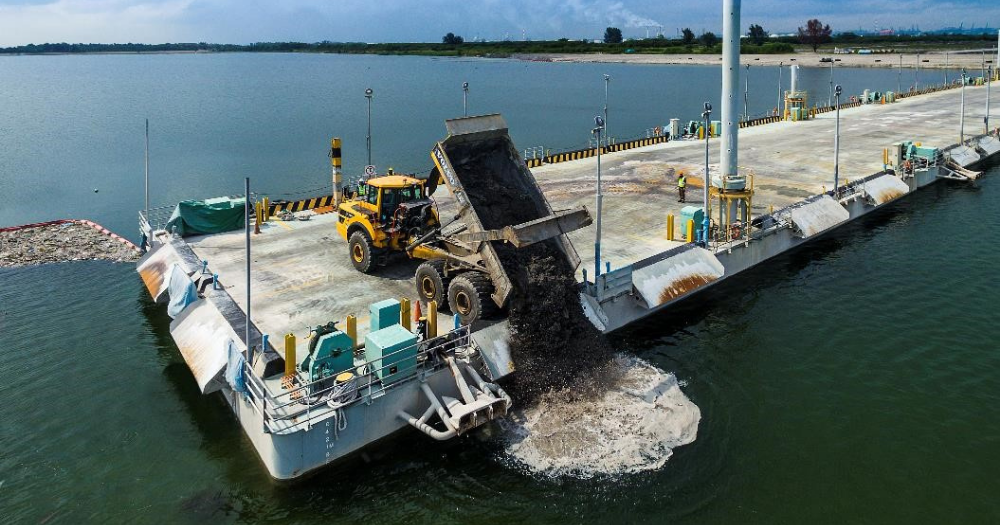
Sustainable businesses, no matter how small, are conscripted into climate action by default. Their contribution — through sustainable production processes and products that serve as eco-friendly alternatives — does chip away at the climate problem. While engaged in this larger battle, they are waging another at a personal level, a fight for survival.
They need to stay afloat in a world that is largely at loggerheads with their ethos. As they slow down the process of production to be conscious in their choices of material, value craftsmanship and traditional artisans setting them high above the assembly line, and keep on eye on the waste being generated in the production process to make sure it is ploughed back into use and avoids the landfill, the larger world with its values of hyper consumption and fast fashion seem to pass them by. So, if you are a business that is small and green, how can you surmount the odds that are stacked up against you? How do you hold on to your green principles and still sustain your sustainable business? Here are pointers on how to do this, based on the experiences of a few small sustainable businesses in Chennai; these are four pillars that can shore up a small sustainable business.

STAKEHOLDER MAPPING First things first: get the business model right for your small sustainable business — the model that suits your business the best. Mamta Jain of Samposhan seems to be on a mission to promote Sustainable Development Goal 12 (sustainable and efficient use of natural resources and reducing waste). SDG12 pops along to define her, be it her Instagram page or LinkedIn profile.
SDG5 too — which is about upholding gender equality and empowering women and girls. Her Adambakkam-based small business Samposhan prides itself on “saving 1615 plus kg of fabric scraps from Chennai’s landfills and converting them into products of everyday use and decor.” That is a part of Samposhan’s statement of faith, as expressed on its Instagram page (@thesamposhan).
Here is a valuable insight from Mamta. Sustainable small businesses often ignore a vital step, stakeholder mapping. In Mamata’s words, “I first had a direct-to-consumer (B2C) approach in mind for my brand.
The idea was to sell upcycled products directly to individual customers. However, after some time, I realised that this model would take longer to yield results than anticipated. While there is a growing awareness of sustainability, convincing consumers to choose upcycled products over traditional ones was a slow process.
The demand for these products simply was not as strong as I had hoped. This realisation prompted me to pivot my strategy from B2C to a business-to-business (B2B) and a business-to-government (B2G) model. By targeting corporations, businesses and government bodies, I could reach larger audiences and make a greater impact on sustainability.
I saw an opportunity to work with businesses that could incorporate sustainable practices into their operations, as well as government bodies that could help implement policies supporting sustainability. Through these partnerships, I hoped to bring my products to a broader market while encouraging larger-scale environmental practices. The switch from B2C to B2B/B2G allowed me to scale the impact of my products and build relationships that could foster more substantial changes in the industry.
This strategy was not only about expanding my customer base, but also about contributing to the larger goal of making sustainability a priority in businesses and government sectors.” She continues: “To summarise my approach to sustaining my sustainable brand: first and foremost, building a sustainable business requires thorough stakeholder mapping— understanding who the key players are and the impact you are creating. Unlike mainstream businesses that focus on scaling through investments, sustainability ventures require a more thoughtful approach — start with low-cost pilots, keep resources minimal, and measure your impact consistently.
While we are still in the early stages, we have managed to save 1,615 kg of waste from landfills and conserved over 500,000 litres of water. The key lies in identifying and pursuing the real impact your business is making, and continuously building knowledge and capacity in this new and evolving climate space.” RESIDENTS CONNECT Increasingly, residents’ groups are pushing themselves to the front lines of the circular economy.
Sustainable businesses can tap into the reach enjoyed by such associations. Ar. Sherin Joseph of Velachery-based Boutique Bougainvillea (which promotes slow fashion, valuing artisanal wisdom and selling handcrafted clothing) keeps a perennially active communication line with groups such as ROKA.
Now, in Chennai, Residents of Kastubanagar Association (ROKA) in Adyar is an exemplar of an association that has transcended the intrinsic hyperlocality of its green initiatives to create impact far and wide.. ROKA’s dry waste drives (its latest scheduled for February 1-2) are usually pan-Chennai events.
ROKA has become an inalienable part of Chennai’s sustainability scene, being a compelling voice, one commanding attention from many other residents’ associations in the metro, Greater Chennai Corporation and enterprises engaged in the circular economy. At Boutique Bougainvillea | Photo Credit: Special Arrangement Through ROKA, Sherin’s green circle widened, particularly when she was introduced by the Adyar-based residents association to On Axis Green Consulting Pvt. Ltd.
, which has proved fruitful in terms of learning. In addition, Sherin is engaged in influencing residents in her own neighbourhood, Seva Nagar in Velachery to make eco-friendly choices. Sherin has taken steps to reduce waste in her local community, and as part of that , as recently as January 12, 2025, Boutique Bougainvillea hosted a composting workshop exclusively for Seva Nagar Welfare Association.
“We are a small neighbourhood — about 80 households — and we are working on going zero waste,” she says. Sherin launched an e-publication to raise awareness on waste management, helping her community live more sustainably. These initiatives send out a strong message: it is not just about her boutique; it is about making a difference in her surroundings.
LARGER COMMUNITY A cause inevitably creates a community; birds of the same feather flocking together and swearing allegiance to the cause. Where sustainability is the cause, micro businesses espousing it should foster the community built around it. Small green businesses need to rally round each other.
Through Boutique Bougainvillea, Sherin drives an initiative called The Handmade Story. It is a special event she holds every year to support smaller women-run sustainable businesses. “We offer our space for free,” Sherin explains, “and we all pitch in for the marketing, so everyone benefits.
” The idea is simple: small businesses can come together, show off their work, and help each other grow. It is a perfect example of community support in action, all the while keeping sustainability at the core. Sherin also organises something called the Kids Craft Carnival.
“It is a fun event where we pick a few kids interested in crafts, mentor them for a month, and then help them showcase their products in an exhibition,” she says. For Sherin, the objective is two-fold. It nurtures creativity in the next generation, and also swells the ranks of the green community.
CUSTOMER ENGAGEMENT Obviously, what applies in the larger business world, applies in the world of small green businesses too. Probably more so here. Kamarkattu Ecostore, a Velachery-based micro enterprise that makes sustainable alternative skincare and homeware products walks its customers through its workaday realities through Insta reels, quickly crafted and free of frills.
It introduces its customers — even potential customers — to the invisible value that goes into the products through a stringently followed production process. Over time, in her journey running Boutique Bougainvillea, Sherin realised that working value into her textiles would not suffice; she needed to speak value into them as well. She believes the road to sustaining a brand is paved with education and engagement.
She extends an invitation to their customers to be participants in their brands’ stories. Sherin’s boutique doubles as a “classroom”, where customers are introduced to the intricacies of the weaving techniques in use and how the weft of sustainability is drawn through the process. The customers also get to learn about the artisans behind each piece.
“When people step into boutique bougainvillea, they step into a story. And once they know that story, it changes the way they see value,” says Sherin, adding that her loyal client base is not drawn by the lowest price but by the highest intention. “The people who come to us are looking for something more.
They want to feel good about their choices. It is about making a connection — once that bond is formed, it is hard to break. Published - January 25, 2025 10:04 am IST Copy link Email Facebook Twitter Telegram LinkedIn WhatsApp Reddit.















